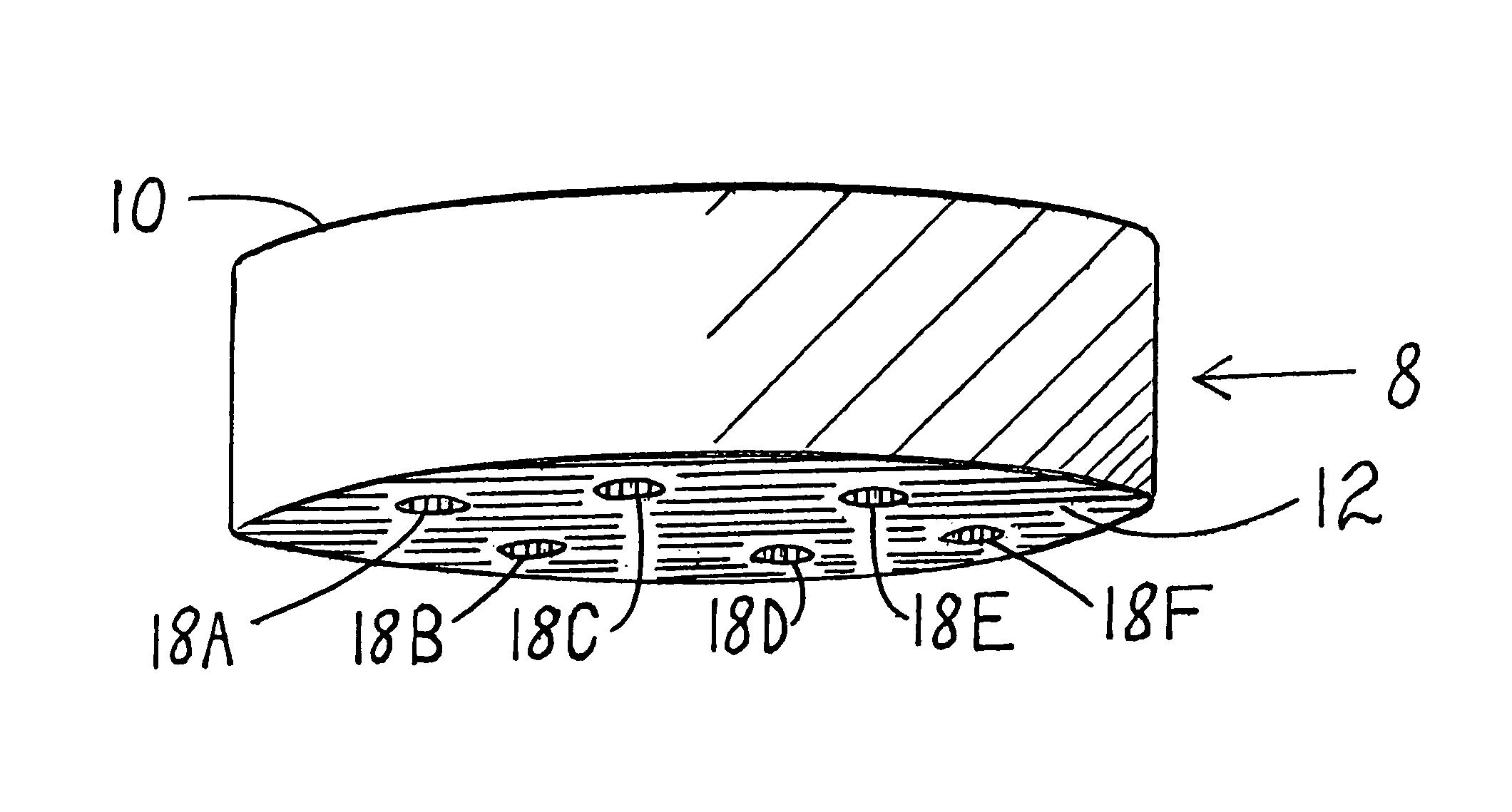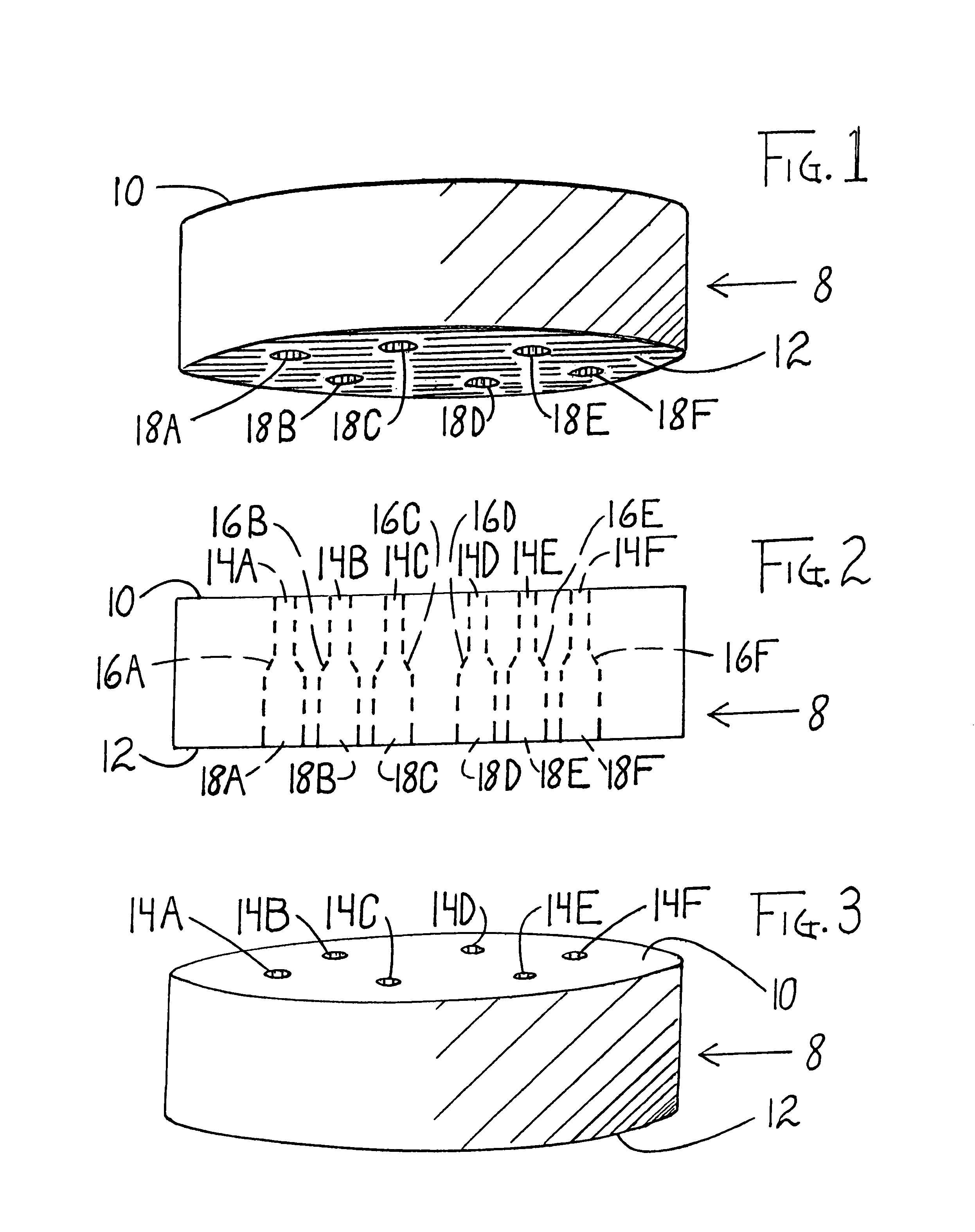Fire kindler
- Summary
- Abstract
- Description
- Claims
- Application Information
AI Technical Summary
Benefits of technology
Problems solved by technology
Method used
Image
Examples
first embodiment
b>2 and 3
[0055]One embodiment of a fire-kindler is illustrated in FIG. 1, FIG. 2 and FIG. 3. Fire-kindler has a multiplicity of vertically rising air apertures which extend completely therethrough. An arrangement and plurality of which is shown, in one embodiment, at a sufficient plurality of six apertures.
[0056]Each aperture is an exact duplicate of each other aperture. A description of one aperture is exactly applicable to all apertures that exist in this one embodiment.
[0057]It is therefore described that the constituent parts of aperture 14A-16A-18A of FIG. 2 are mechanically introduced upon body of fire-kindler 8 of FIGS. 12 and 3 and are positioned sufficiently within its proportions. A boring tool with dimensions suitable to produce upper aperture 14A of FIGS. 2 and 3 is sent completely through body of fire-kindler 8 of FIGS. 1, 2 and 3. Having been introduced at an approximately perpendicular angle relative to top surface 10 of FIG. 2.
[0058]The boring tool is then removed an...
PUM
 Login to View More
Login to View More Abstract
Description
Claims
Application Information
 Login to View More
Login to View More - R&D
- Intellectual Property
- Life Sciences
- Materials
- Tech Scout
- Unparalleled Data Quality
- Higher Quality Content
- 60% Fewer Hallucinations
Browse by: Latest US Patents, China's latest patents, Technical Efficacy Thesaurus, Application Domain, Technology Topic, Popular Technical Reports.
© 2025 PatSnap. All rights reserved.Legal|Privacy policy|Modern Slavery Act Transparency Statement|Sitemap|About US| Contact US: help@patsnap.com


